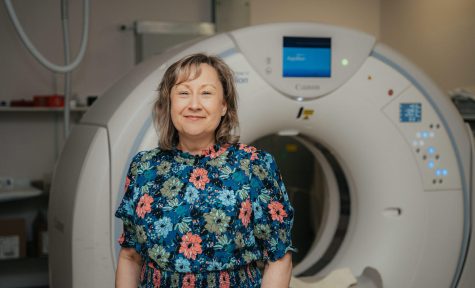9 October 2025
Achieving high retention and staff satisfaction in NHS imaging

At a time when many imaging departments across the UK are facing shortages of staff, North West Anglia NHS Foundation Trust’s (NWAFT) imaging department has managed to retain colleagues and reports high levels of staff satisfaction.
We spoke to Rachel Nolan, Assistant Imaging Services & Professional Lead at NWAFT, who feels that flexible working, as well as ensuring a clear career path for imaging staff, are the key ingredients for the high levels of retention.
Rachel takes us through how the department has embraced flexibility, in many forms – from some of the more traditional forms of flexible working such as flexi-time through to introducing innovative practices such as home working for reporting radiographers.
The imaging services at NWAFT span two acute sites and five community sites, and are supported by a team of 300 staff.
Ultrasound
“I’m surprised when I hear so many people in the profession talk about flexible working requests being denied by managers – flexibility feels like a basic expectation in our department. We introduced flexible working 20 years ago, and it’s just a core part of our working culture.
The key is give and take. There’s an awareness, and of course the expectation, that the hours must meet service needs. But giving people a level of flexibility, means you get that and more back from your team. This makes it easier to fill gaps, and to get all hands on deck when we’re experiencing high levels of demand.
- Flexi-time: The majority of people in Ultrasound have a reasonably set working pattern, choosing to work either 8am – 6pm four days a week with a set flexi day, or 8am-4pm five days a week. Flexi-days are agreed in advance, to ensure capacity is evenly spread across the week. This builds the backbone of cover in the department, enabling a smaller percentage of people to have a less conventional set working pattern. All working patterns are agreed with the Principal Sonographer to ensure that the department can continue to meet the service needs.
- Consistent start time: Majority of shifts must start at 8am, a few start at 0830 but only a minimal number. This consistency enables the team to plan service delivery with a degree of certainty, while also providing flexibility through the flexi-time system.
- Consistency for trainees: Trainees work set patterns during their training and preceptorship. This ensures they are supported and supervision is always on hand in those early days. Flexible working is then available post preceptorship.
- Planning ahead: Rota hours are asked for every four weeks, we always have at least 6 weeks of diaries open for booking. This enables an equal spread across sites and specialities, and ensures all core sessions are covered. We then tweak this, adding in and out for annual leave or flexible requests. A rolling weekend rota means the team can choose whether they accrue the time and bank it or accrue the time to take off in the week before or after their weekend shift, whichever they prefer.
- Annual leave is approved centrally: Annual leave is approved centrally, to help ensure there will always be enough staff to cover core sessions, and we take mandatory training into consideration with our approval of annual leave.
- Dedicated ultrasound clinical support workers: Clinical support workers join the rota to cover the requirements, but we also use the main department pool which helps plug the holes. This enables them to choose to work long days or spread their hours equally through the week.
Radiography
- Remote working: During the pandemic, home working stations (diagnostic screens and secure PCs to allow reporting of x-rays from home) were purchased to allow Reporting Radiographers to work from home. Traditionally Consultant Radiologists have always had this provision, but this was rolled out to reporting radiographers, during what was an unprecedented time. Now, all our reporting radiographer team can have home working stations should they wish. They are permitted to work up to 50% of their working week from home, with flexibility in hours. An audit of performance has shown increased productivity when reporting off-site, due to lack of interruptions.
- Flexible hours: Alongside the remote working, radiography colleagues are able to manage their own schedules within service requirements.
A people centred culture
All of the factors outlined above have helped us to foster flexibility both from staff and for staff. The team understands that during certain periods – such as peak annual leave – flexi days may not always be feasible.
However, by prioritising flexibility, we’ve cultivated a genuinely adaptable culture built on mutual trust and a “give and take” ethos. This means everyone is willing to step up and support each other when needed. Handling peak times is a lot easier when everyone is willing to chip-in!
Another key factor in staff retention is our clearly defined career pathways. The opportunity to progress – and to be supported at every stage – has helped create a strong learning culture where people can envision a meaningful future within the team.
Overall, our people-centred approach has led to high levels of engagement and retention, as well as lower sickness rates across the department.